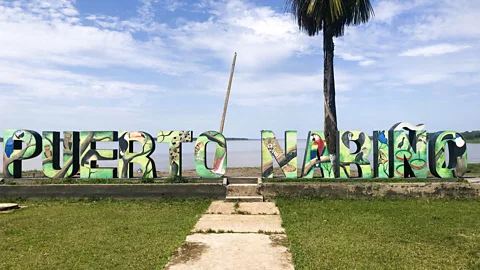The Amazonian town putting world cities to shame
 Brendan Sainsbury
Brendan SainsburyPuerto Nariño is a tranquil experiment in sustainable living where motor vehicles are banned and the streets are as clean as Copenhagen's.
The boat dock in the Colombian town of Leticia was a hive of market-traders, tuk-tuks and bobbing water taxis. I bought a ticket from a small office on the Malecón promenade and navigated my way past a cluster of wooden houses on stilts to a row of floating platforms beside the Amazon River. There were no proper steps down to the water. Instead, I clambered down a slippery bank and showed my ticket to a busy attendant handing out life jackets.
"Puerto Nariño">window._taboola = window._taboola || []; _taboola.push({ mode: 'alternating-thumbnails-a', container: 'taboola-below-article', placement: 'Below Article', target_type: 'mix' });
